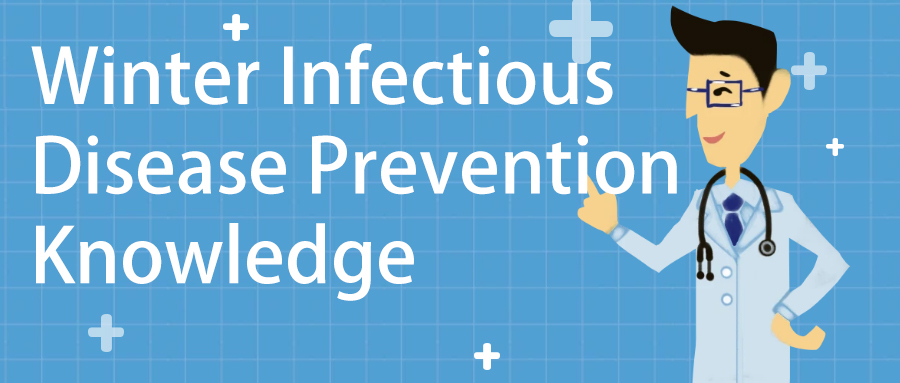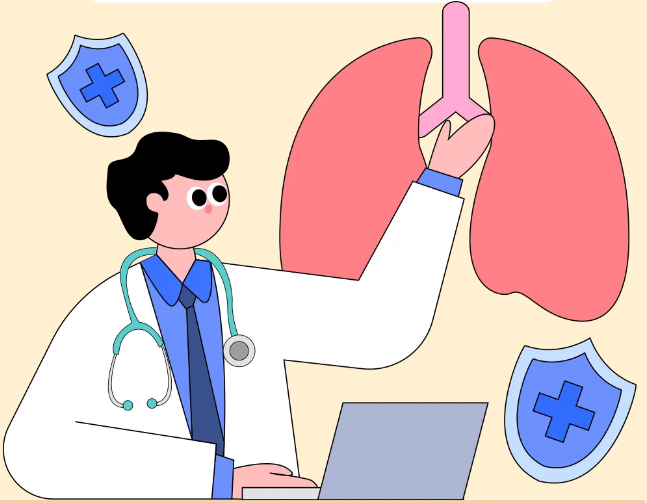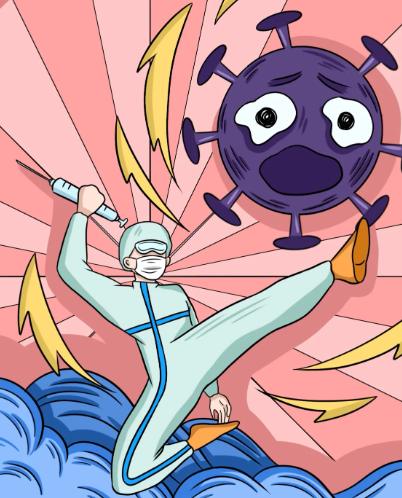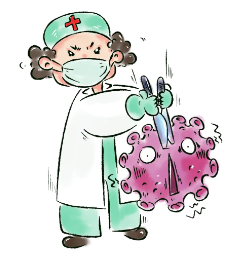
Recently, the National Health Commission held a press conference on the prevention and control of respiratory diseases in winter, introducing the prevalence of respiratory diseases and preventive measures in winter in China, and answering questions from the media. At the conference, experts said that at present, China has entered the season of high incidence of respiratory diseases, and a variety of respiratory diseases are intertwined and superimposed, posing a threat to people's health. Respiratory diseases refer to the inflammation of the mucous membrane of the respiratory tract caused by pathogen infection or other factors, mainly including upper respiratory tract infection, pneumonia, bronchitis, asthma and so on. According to the monitoring data of the National Health and Health Commission, the pathogens of respiratory diseases in China are mainly dominated by influenza viruses, in addition to the distribution of other pathogens in different age groups, for example, there are also rhinoviruses causing common colds in children aged 1-4 years old; in the population of people aged 5-14 years old, Mycoplasma infections and adenoviruses causing common colds have a In the 5-14 age group, Mycoplasma infections and adenoviruses that cause the common cold account for a certain proportion of the population; in the 15-59 age group, rhinoviruses and neocoronaviruses can be seen; and in the 60+ age group, there are large proportions of the human parapneumovirus and common coronavirus.

Mycoplasma pneumoniae is a microorganism that is intermediate between bacteria and viruses; it has no cell wall but has a cell membrane, and can reproduce autonomously or invade and parasitize within host cells. The genome of Mycoplasma pneumoniae is small, with only about 1,000 genes. Mycoplasma pneumoniae is highly mutable and can adapt to different environments and hosts through genetic recombination or mutation. Mycoplasma pneumoniae is mainly controlled by the use of macrolide antibiotics, such as azithromycin, erythromycin, clarithromycin, etc. For patients who are resistant to these drugs, newer tetracyclines or quinolones can be used.

Influenza viruses are positive-strand RNA viruses, which come in three types, type A, type B and type C. Influenza A viruses have a high degree of mutability and can lead to influenza pandemics. The genome of influenza virus consists of eight segments, each of which encodes one or more proteins. Influenza viruses mutate in two main ways, one is antigenic drift, in which point mutations occur in the viral genes, resulting in antigenic changes in hemagglutinin (HA) and neuraminidase (NA) on the surface of the virus; the other is antigenic rearrangement, in which simultaneous infection of different subtypes of influenza viruses in the same host cell leads to recombination of viral gene segments, resulting in the formation of new subtypes. Influenza viruses are mainly managed by the use of neuraminidase inhibitors, such as oseltamivir and zanamivir, and in severely ill patients, symptomatic supportive therapy and treatment of complications are also required.
Neocoronavirus is a single-stranded positive-sense stranded RNA virus belonging to the Coronaviridae family, which has four subfamilies, namely α, β, γ, and δ. Subfamilies α and β primarily infect mammals, while subfamilies γ and δ primarily infect birds. The genome of neocoronavirus consists of a long open reading frame encoding 16 non-structural and four structural proteins, namely membrane protein (M), hemagglutinin (S), nucleoprotein (N) and enzyme protein (E). Mutations of Neocoronaviruses are mainly due to errors in viral replication or insertion of exogenous genes, leading to changes in viral gene sequences, which affect viral transmissibility, pathogenicity and immune escape ability. Neocoronaviruses are managed mainly by the use of antiviral drugs such as ridecivir and lopinavir/ritonavir, and in severe cases, symptomatic supportive therapy and treatment of complications are also required.
The main ways to control respiratory diseases are as follows:
Vaccination. Vaccines are the most effective means of preventing infectious diseases and can stimulate the body to produce immunity against pathogens. At present, China has a variety of vaccines for respiratory diseases, such as influenza vaccine, new crown vaccine, pneumococcal vaccine, pertussis vaccine, etc. It is recommended that eligible people get vaccinated in a timely manner, especially the elderly, patients with underlying diseases, children and other key populations.

Maintain good personal hygiene habits. Respiratory diseases are spread mainly by droplets and contact, so it is important to minimize the spread of pathogens by washing your hands regularly, covering your mouth and nose with a tissue or elbow when coughing or sneezing, not spitting, and not sharing utensils.
Avoid crowded and poorly ventilated areas. Crowded and poorly ventilated places are high-risk environments for respiratory diseases and are prone to cross-infection of pathogens. Therefore, it is important to minimize visits to these places, and if you must go, wear a mask and maintain a certain social distance to avoid close contact with others.
Enhance body resistance. Body resistance is the first line of defense against pathogens. It is important to improve the body's immunity and reduce the risk of infection through a sensible diet, moderate exercise, adequate sleep, and a good state of mind.
Pay attention to keep warm. Winter temperatures are low, and cold stimulation can lead to a decline in the immune function of the respiratory mucosa, making it easier for pathogens to invade. Therefore, pay attention to keep warm, wear appropriate clothing, avoid cold and flu, timely adjustment of indoor temperature and humidity, and maintain indoor ventilation.
Seek timely medical attention. If symptoms of respiratory diseases such as fever, cough, sore throat and difficulty in breathing occur, you should go to a regular medical institution in time, diagnose and treat the disease according to the doctor's instructions, and do not take medication on your own or delay seeking medical attention. At the same time, you should truthfully inform your doctor of your epidemiological and exposure history, and cooperate with him or her in epidemiological investigations and epidemiological dispositions to prevent the spread of the disease.
The main ways to control respiratory diseases are as follows:
Vaccination. Vaccines are the most effective means of preventing infectious diseases and can stimulate the body to produce immunity against pathogens. At present, China has a variety of vaccines for respiratory diseases, such as influenza vaccine, new crown vaccine, pneumococcal vaccine, pertussis vaccine, etc. It is recommended that eligible people get vaccinated in a timely manner, especially the elderly, patients with underlying diseases, children and other key populations.
Maintain good personal hygiene habits. Respiratory diseases are spread mainly by droplets and contact, so it is important to minimize the spread of pathogens by washing your hands regularly, covering your mouth and nose with a tissue or elbow when coughing or sneezing, not spitting, and not sharing utensils.
Avoid crowded and poorly ventilated areas. Crowded and poorly ventilated places are high-risk environments for respiratory diseases and are prone to cross-infection of pathogens. Therefore, it is important to minimize visits to these places, and if you must go, wear a mask and maintain a certain social distance to avoid close contact with others.
Enhance body resistance. Body resistance is the first line of defense against pathogens. It is important to improve the body's immunity and reduce the risk of infection through a sensible diet, moderate exercise, adequate sleep, and a good state of mind.
Pay attention to keep warm. Winter temperatures are low, and cold stimulation can lead to a decline in the immune function of the respiratory mucosa, making it easier for pathogens to invade. Therefore, pay attention to keep warm, wear appropriate clothing, avoid cold and flu, timely adjustment of indoor temperature and humidity, and maintain indoor ventilation.
Seek timely medical attention. If symptoms of respiratory diseases such as fever, cough, sore throat and difficulty in breathing occur, you should go to a regular medical institution in time, diagnose and treat the disease according to the doctor's instructions, and do not take medication on your own or delay seeking medical attention. At the same time, you should truthfully inform your doctor of your epidemiological and exposure history, and cooperate with him or her in epidemiological investigations and epidemiological dispositions to prevent the spread of the disease.
Post time: Dec-15-2023
 中文网站
中文网站
